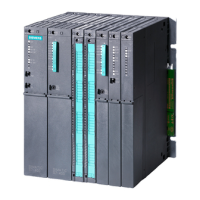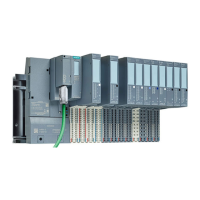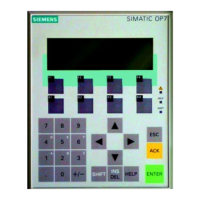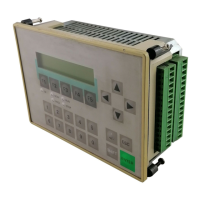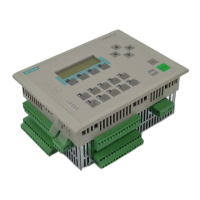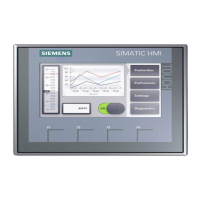I/O configuration variants
6.7 Connection of two-channel I/O to the PROFIBUS DP interface
CPU 410 Process Automation/CPU 410 SMART
System Manual, 05/2017, A5E31622160-AC
95
Redundant analog output modules
You implement fault-tolerant control of a final controlling element by wiring two outputs of two
analog output modules in parallel (1-out-of-2 configuration)
Figure 6-19 Fault-tolerant analog output modules in 1-out-of-2 configuration
The following applies to the wiring of analog output modules:
● Wire the ground connections in a star structure to avoid output errors (limited common-
mode suppression of the analog output module).
If you do not use terminal modules, see the interconnection examples in the Appendix
Connection examples for redundant I/Os (Page 391)
Only analog output modules with current outputs (0 to 20 mA, 4 to 20 mA) can be operated
redundantly.
The output value is divided by 2, and each of the two modules outputs half. If one of the
modules fails, the failure is detected and the remaining module outputs the full value. As a
result, the surge at the output module in the event of an error is not as high.
Note
The output value drops briefly to half, and after
the reaction in the program it is returned to
the proper value. The duration of the output value drop is determined by the following time
intervals:
Time interval between the initial occurrence of an interrupt and the interrupt report
reaching the CPU.
Time interval until the next RED_OUT (FB 451) call.
Time interval until the intact analog output module has doubled the output value.
In the case of passivation or a CPU STOP, redundant analog outputs output an assignable
minimum current of approximately 120-1000 μA per module (or 240-1000 μA for HART
analog output modules), i.e., a total of approximately 240-2000 µA (or 480-2000 μA for
HART analog output modules). Considering the tolerance, this means that the output value
is always positive.

